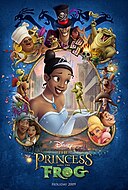Lists



3 Books
References for artists
Sort by:
Recent Desc
Liked by
More lists by Anna Skär



Shows, shows, shows!
List includes: Seinfeld, The Office, Mad Men
July 2023
2
@anna-skar

Urban sketching
List includes: The Art of Urban Sketching: Drawing On Location Around The World
July 2023
0
@anna-skar



At least one in life
List includes: The Adventures of Tom Sawyer, Of Mice and Men, The Jungle Book
July 2023
1
@anna-skar



Good books to learn to draw
List includes: Color and Light: A Guide for the Realist Painter, The New Drawing on the Right Side of the Brain, The Laws Guide to Drawing Birds
July 2023
3
@anna-skar



The art of animation
List includes: The Animator's Survival Kit: A Manual of Methods, Principles, and Formulas for Classical, Computer, Games, Stop Motion and Inter, Spider-Man: Into the Spider-Verse -The Art of the Movie, The Art of The Princess and the Frog
July 2023
0
@anna-skar



Something wild to read
List includes: The Jungle Book, The Call of the Wild, The Adventures of Huckleberry Finn
July 2023
0
@anna-skar